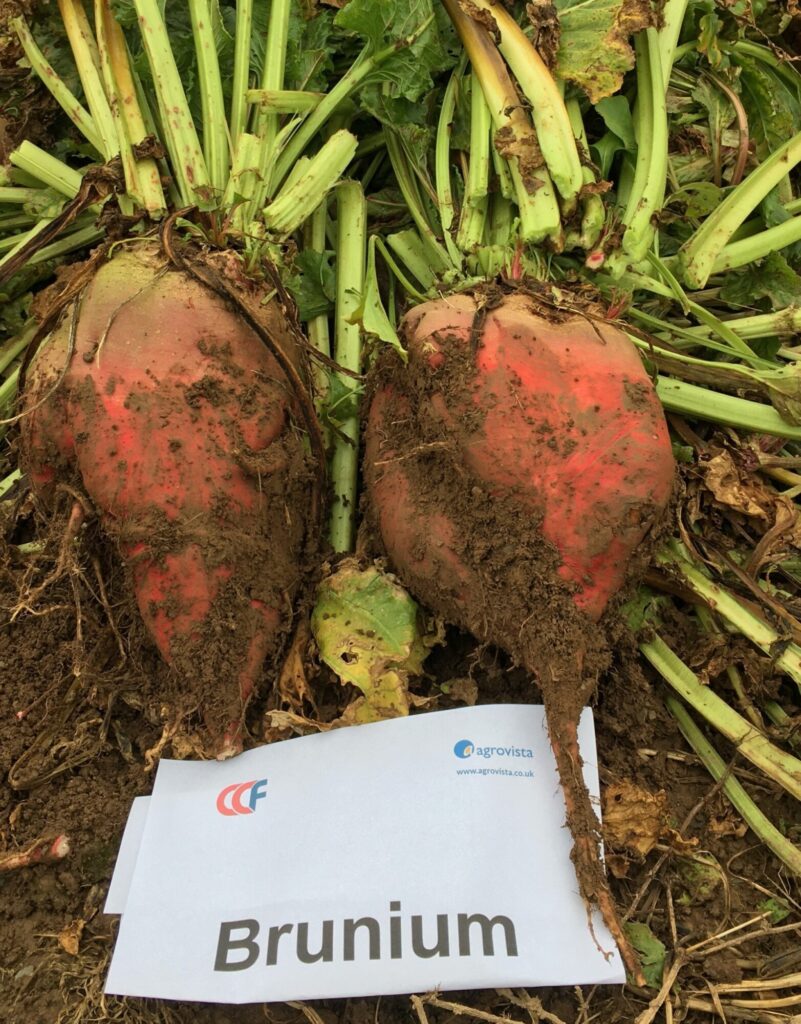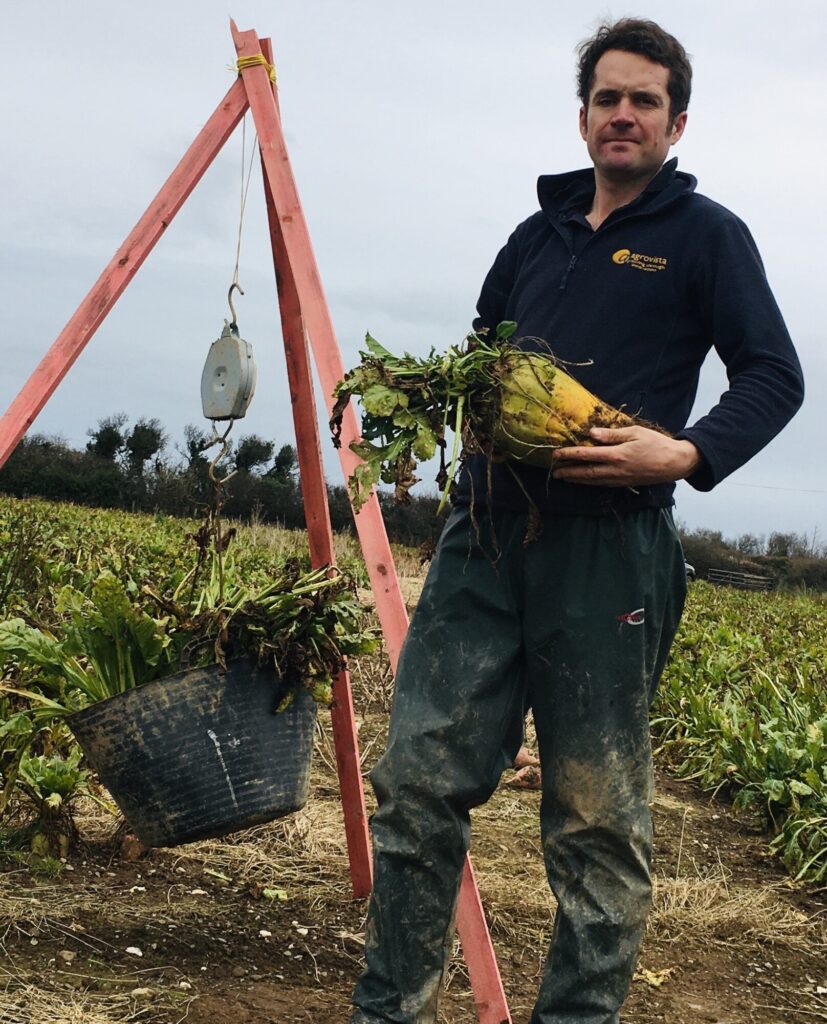Taking a fresh look at fodder beet for 2024
26th January 2024
Plenty of positives for growers from the UK’s highest yielding forage crop, says Agrovista agronomist Lyndon Harris.

With spring firmly on the horizon, it’s time to start thinking about planning fodder beet says agronomist Lyndon Harris. Based in Pembrokeshire, West Wales and dividing his time between Agrovista UK and CCF Agri, one of the UK’s oldest farmer-owned co-operatives, Lyndon has been working with fodder beet growers for over 11 years.
But, despite its popularity amongst growers who value its reliability for producing high yields and unique position as the highest yielding forage crop, he feels fodder beet is often overlooked by farmers.
High yields per hectare
Lyndon says: “Despite strong economic and agronomic arguments for including fodder beet in rotations as a high energy feed for cattle or sheep, it does have a very long harvesting period so many arable or mixed farmers dismiss it on the basis that they can’t always follow it with an autumn drilled crop.
“In truth, 30–40% of existing fodder beet growers harvest a good percentage of their fodder beet early enough in order to still drill winter wheat, so incorporating fodder beet successfully into existing rotations is readily achievable.
“However, I think the main factor holding back fodder beet from a wider grower audience is that, for many grassland farmers with little arable experience, it can be seen as a challenging crop to grow, which is disappointing to hear. If grown well, fodder beet can offer very high yields per hectare – and every single dairy farmer that I deal with tells me that when they include fodder beet in their feeding system, milk yields go up.”

Planning is key
“As with all crops, detailed planning is essential to achieve maximum yield potential with specific focus on good seedbed preparation, the right fertiliser and herbicide application advice and, most importantly, selecting the right variety for farming systems.
“As fodder beet seed is small, good seed to soil contact is essential. Establishing a fine seedbed and a favourable tilth on the soil surface ensures good contact is made and will also help increase the effectiveness of pre-emergence herbicides on the newly established crop.
“It’s also important to recognise that cold, wet conditions don’t phase fodder beet. It thrives in areas where there is very high rainfall and is capable of growing in much lower soil temperatures than other arable crops, although drilling too early can be problematic in frost prone regions. Soil depth isn’t a major factor either, given fodder beet doesn’t suffer from soil compaction problems as much as other crops, especially maize.
Crop nutrition tips
“On crop nutrition, although fodder beet is not particularly nitrogen hungry, it does require a significant amount of potash sourced from slurry or farmyard manure. A good agronomy tip is to substitute 50% of the potash requirement with agricultural salt. Fodder beet is one of the few crops that is salt tolerant. It absorbs salt very effectively, in the same way other crops would absorb potash, because it was originally grown in Mediterranean countries in soils with very high salt content.
“On trace elements, the important one for fodder beet is boron, which can be added to agricultural salt at very little cost. Boron plays a key role in supporting a diverse range of plant functions, including cell wall formation and stability, and is a must for improving potential yields.”
Variety selection
“For fodder beet growers, particularly new or first-time growers, good variety selection is critical. First and foremost, decide which variety suits your preferred system whether its graze in situ, lift to feed or – in the case of an arable farm – lift and store to sell.
“If you’re grazing then you need a variety with a lot of top visible above the ground, if you’re on heavier soils then a smooth skinned variety with low dirt tare for easier lifting is desirable – and, depending on whether you’re lifting earlier or later, good frost tolerance has to be a factor.
“Having trialed between 12–17 fodder beet varieties annually over the last few years, Brunium, from French breeder Florimond Desprez, has stood out on yield and overall performance since I first began trialing it in 2019. In last year’s trial it achieved fresh weight yields of 134t/ha including tops, comfortably ahead of the next best variety and a massive 36t/ha ahead of the lowest yielding variety.
“It’s a dual purpose, rhizomania tolerant variety that produces an exceptional amount of top and leaf, making it much more resilient to rust and other foliar diseases. The amount of leaf it produces also gives it good frost tolerance, with the leaves acting like a cloak to protect the top.
“Brunium’s relatively smooth skin and low dirt tare makes it suitable for easier lifting in heavier soils and with a high percentage of top above the ground it can be top lifted, bottom lifted or grazed in situ. Overall, it’s a very high yielding, versatile choice that suits most farming systems,” concludes Lyndon.
Getting the best from Brunium
Representing independent breeder Elsoms Seeds who market the variety in the UK, Toby Reich, head of agricultural sales, acknowledges Lyndon’s positive feedback on Brunium based on his extensive knowledge of the variety.
Toby adds: “Although Brunium has only been commercially available in the UK since 2021, Lyndon first began trialing it in 2019. With four years of trial data behind them, he, Agrovista and CCF are uniquely positioned to offer expert agronomic advice on getting the best from Brunium.
“Elsoms currently have a portfolio of seven fodder beet varieties, all offering strong agronomics and a place in any farming system.
“Whilst Jamon is still one of our most popular varieties, Lempa – a new, high yielding, Rhizomania tolerant variety with a medium dry matter percentage, has also performed exceptionally well and was the highest yielding variety in recent Elsoms trials. With a smooth skin, clean lift, and conical shape it provides a high energy feed that suits any farming system.
“Both Brunium and Lempa offer all the existing benefits of Jamon with the bonus of improved disease tolerance and higher yields,” he concludes.
Read more arable articles here


